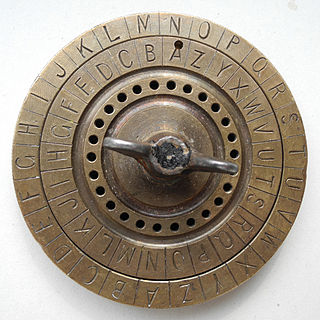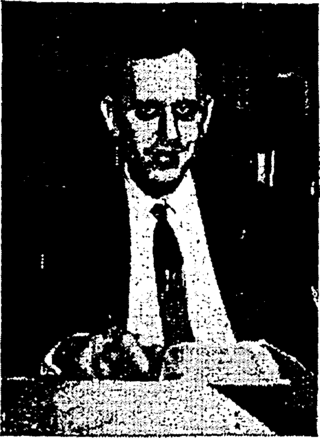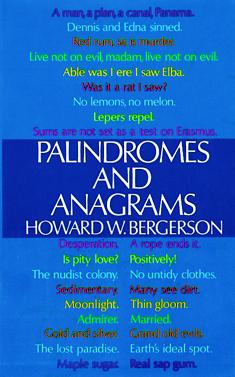The identity of the longest word in English depends on the definition of a word and of length.
F, or f, is the sixth letter in the Latin alphabet, used in the modern English alphabet, the alphabets of other western European languages and others worldwide. Its name in English is ef, and the plural is efs.
An orthography is a set of conventions for writing a language, including norms of spelling, hyphenation, capitalization, word boundaries, emphasis, and punctuation.
A pangram or holoalphabetic sentence is a sentence using every letter of a given alphabet at least once. Pangrams have been used to display typefaces, test equipment, and develop skills in handwriting, calligraphy, and typing.
Filipinoorthography specifies the correct use of the writing system of the Filipino language, the national and co-official language of the Philippines.
A phonemic orthography is an orthography in which the graphemes correspond to the phonemes of the language. Natural languages rarely have perfectly phonemic orthographies; a high degree of grapheme–phoneme correspondence can be expected in orthographies based on alphabetic writing systems, but they differ in how complete this correspondence is. English orthography, for example, is alphabetic but highly nonphonemic; it was once mostly phonemic during the Middle English stage, when the modern spellings originated, but spoken English changed rapidly while the orthography was much more stable, resulting in the modern nonphonemic situation. On the contrary the Albanian, Serbian/Croatian/Bosnian/Montenegrin, Romanian, Italian, Turkish, Spanish, Finnish, Czech, Latvian, Esperanto, Korean and Swahili orthographic systems come much closer to being consistent phonemic representations.
Piphilology comprises the creation and use of mnemonic techniques to remember many digits of the mathematical constant π. The word is a play on the word "pi" itself and of the linguistic field of philology.
The trifid cipher is a classical cipher invented by Félix Delastelle and described in 1902. Extending the principles of Delastelle's earlier bifid cipher, it combines the techniques of fractionation and transposition to achieve a certain amount of confusion and diffusion: each letter of the ciphertext depends on three letters of the plaintext and up to three letters of the key.

Gaj's Latin alphabet, also known as abeceda or gajica, is the form of the Latin script used for writing Serbo-Croatian and all of its standard varieties: Bosnian, Croatian, Montenegrin, and Serbian.

A cipher disk is an enciphering and deciphering tool developed in 1470 by the Italian architect and author Leon Battista Alberti. He constructed a device, consisting of two concentric circular plates mounted one on top of the other. The larger plate is called the "stationary" and the smaller one the "moveable" since the smaller one could move on top of the "stationary".

Hubert Blaine Wolfeschlegelsteinhausenbergerdorff Sr. is the abbreviated name of a German-born American typesetter who has held the record for the longest personal name ever used. Hubert's name is made up from 27 names. Each of his 26 given names starts with a different letter of the English alphabet in alphabetical order; these are followed by an enormously long single-word last name. The exact length and spelling of his name has been a subject of considerable confusion due in part to its various renderings over the years, many of which are plagued by typographical errors. One of the longest and most reliable published versions, with a 666-letter surname, is as follows:
Adolph Blaine Charles David Earl Frederick Gerald Hubert Irvin John Kenneth Lloyd Martin Nero Oliver Paul Quincy Randolph Sherman Thomas Uncas Victor William Xerxes Yancy Zeus Wolfeschlegelsteinhausenbergerdorffwelchevoralternwarengewissenhaftschaferswessenschafewarenwohlgepflegeundsorgfaltigkeitbeschutzenvorangreifendurchihrraubgierigfeindewelchevoralternzwolfhunderttausendjahresvorandieerscheinenvonderersteerdemenschderraumschiffgenachtmittungsteinundsiebeniridiumelektrischmotorsgebrauchlichtalsseinursprungvonkraftgestartseinlangefahrthinzwischensternartigraumaufdersuchennachbarschaftdersternwelchegehabtbewohnbarplanetenkreisedrehensichundwohinderneuerassevonverstandigmenschlichkeitkonntefortpflanzenundsicherfreuenanlebenslanglichfreudeundruhemitnichteinfurchtvorangreifenvorandererintelligentgeschopfsvonhinzwischensternartigraum Sr.

Dmitri Alfred Borgmann was a German-American author best known for his work in recreational linguistics.

Zzxjoanw is a fictitious entry in an encyclopedia which fooled logologists for many years. It referred to a purported Māori word meaning "drum", "fife", or "conclusion".

"Buffalo buffalo Buffalo buffalo buffalo buffalo Buffalo buffalo" is a grammatically correct sentence in English that is often presented as an example of how homonyms and homophones can be used to create complicated linguistic constructs through lexical ambiguity. It has been discussed in literature in various forms since 1967, when it appeared in Dmitri Borgmann's Beyond Language: Adventures in Word and Thought.
Logology is the field of recreational linguistics, an activity that encompasses a wide variety of word games and wordplay. The term is analogous to the term "recreational mathematics".

Word Ways: The Journal of Recreational Linguistics is a quarterly magazine on recreational linguistics, logology and word play. It was established by Dmitri Borgmann in 1968 at the behest of Martin Gardner. Howard Bergerson took over as editor-in-chief for 1969, but stepped down when Greenwood Periodicals dropped the publication. A. Ross Eckler Jr., a statistician at Bell Labs, became editor until 2006, when he was succeeded by Jeremiah Farrell.
A panalphabetic window is a stretch of text that contains all the letters of the alphabet in order. It is a special type of pangram or pangrammatic window.

Palindromes and Anagrams is a 1973 non-fiction book on wordplay by Howard W. Bergerson.

Language on Vacation: An Olio of Orthographical Oddities is a 1965 book written by Dmitri Borgmann.

Beyond Language: Adventures in Word and Thought is a 1967 book written by Dmitri Borgmann.









